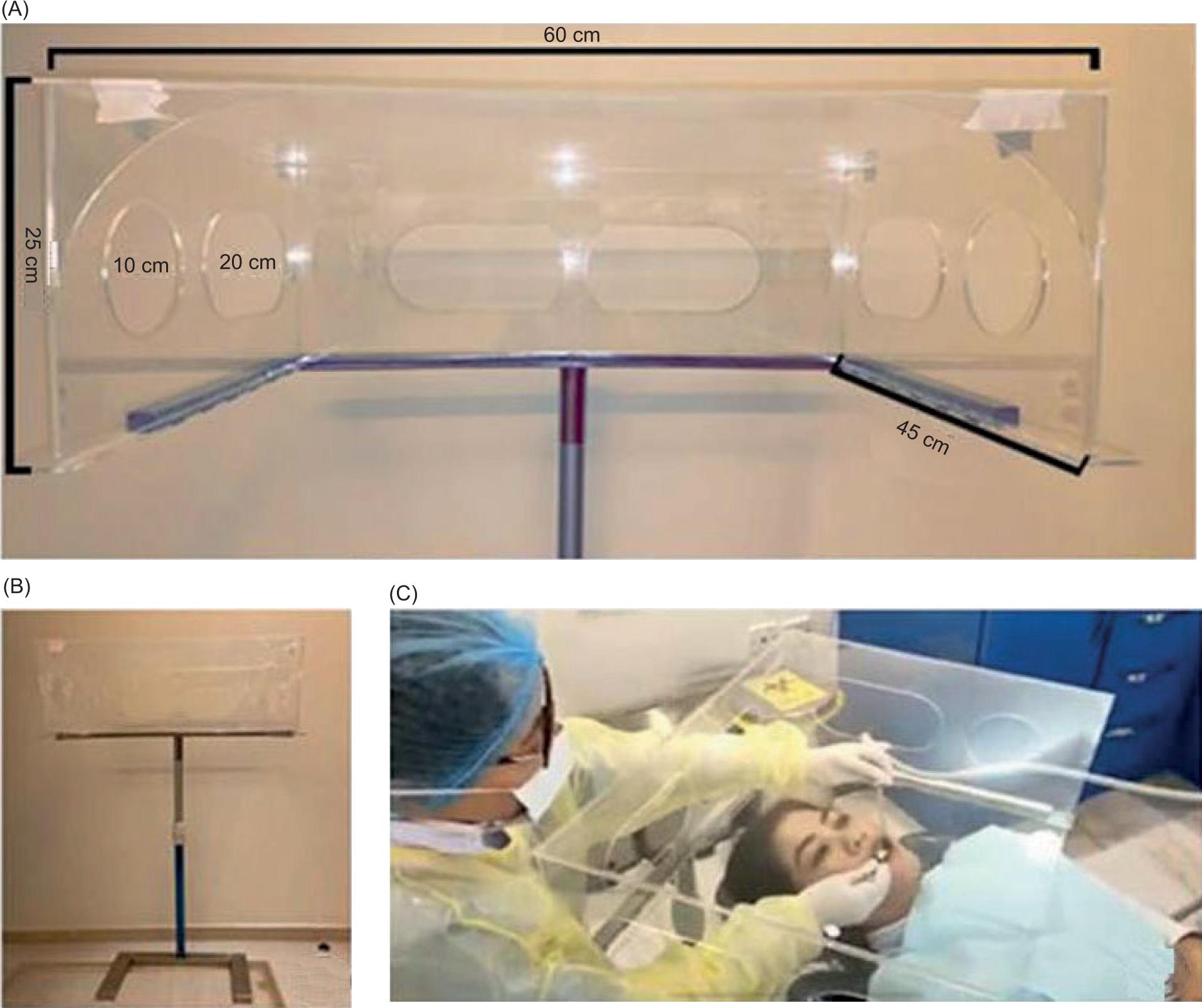INTRODUCTION
The coronavirus pandemic outbreak (COVID 19) significantly affected the healthcare system.1 This contagious virus spreads through respiratory droplets through sneezing, coughing, and contact.2 To avoid cross-contamination by this viral disease, lockdowns were suggested worldwide by various health authorities.3 Subsequently, a global lockdown created fear among dental professionals4 and posed confusion regarding clinical practice. Most dental procedures performed in the dental operatory are aerosol generated.5 The major shortcoming of a dental operatory involves the generation of aerosols, which was also considered a fundamental cause of COVID-19 transmission. Dental aerators, air-water syringes, and ultrasonic scalers are used infrequently in the dental operatory for providing dental treatments. These can produce aerosols that contain the patient’s saliva and a mixture of water and air derived from these devices used in the dental clinical setting.6 For these reasons, dental operatories are reportedly at a higher risk for cross-infection with COVID-19.7,8 To avoid such cross-contamination and spread among the dental personnel and patients, a few authors suggested using an aerosol box. Therefore, this study aimed to introduce a reformed aerosol box design to practice safe dentistry.
MODERN DENTAL AEROSOL BOX
To minimize the risk of COVID-19 transmission in the dental operatory through contaminated aerosols, we recommend a reformed aerosol box design with a stand for practicing safe dentistry. The modified design (Figure 1) involves a reduced base width for the adaptable box to a dental chair with an adjustable stand. The measurements of the reformed aerosol box with 50 × 50 × 50 cm with an open base and the patient’s side. It has six working points that include rectangular working areas on the dentist’s side (Figure 1), two vents (one circular and one rectangular) on the left side for a dental assistant (Figure 1), and two vents (one circular and one rectangular) on the right side (Figure 1). The aerosol box is positioned parallel to the square-shaped opening base for proper working and another single working port on the surface, which is on the patient’s left side for getting assistance from that side. The modifications include six vents, two for the dentist and a dental assistant for better access to the oral cavity. The other two vents are helpful for the access aerator, micromotor, and scaler for the oral cavity. The stand has the facility of adjusting the box (Figure 1), making it comfortable for the dentist to provide dental treatment, and the stability of the aerosol box. It could be coupled with a routine office-based suction device. The advantages of this modified aerosol box (Dentist’s Shield) are mentioned below:
-
Dentists’ Shield also protects patients’ open airways against infection during the dental procedure.
-
The product helps protect the dentist and dental surgery assistant from flying debris and aerosol while working.
-
The design is flexible with an adjustable length.
-
The upper cover is made up of a transparent disposable acrylic layer.
-
It can be effortlessly disinfected with sterilization materials.
FIGURE 1. Aerosol box (Dentist’s Shield) reformed design (A), adjusted to the dental chair with a stand (B), and demonstration of patient accessibility in dental operatory (C).

Coronavirus disease (COVID-19) spreads through direct and indirect contact, primarilratory droplets, and splatter from saliva or blood through contact with mucous membranes.1 Aerosol in dental operatories has been reported to transmit acute respiratory infections from patient to patient or tal personnel.2 Nevertheless, to minimize the transmission through aerosol generation, we recommend a reformed design of the aerosol box with a stand to practice safe dentistry. Most procedures in dentistry are aerosol-generated, and it has been reported that the aerosols are a possible source of COVID-19 transmission in dental practice.1,3 A recent survey performed among dental undergraduate students,10 dentists,11 dental specialists,9 and pediatric dentists12 opined that personal protection equipment is essential to avoid cross-contamination in the dental operatory. Various box designs have been introduced to minimize the aerosols in dental operatory13,14 and operation theatres15as suggested using head caps, disposable surgical gowns, safety glasses, and face shields, and refrain from removing them immediately after the procedure within the dental operatory and an aerosol box while performing clinical procedures.16 Reducing the number of aerosols in dental practice is imperative to avoid cross-infection with COVID-19.2,5 The authors recommend using the aerosol box (Dentist’s Shield) while performing dental procedures during and after the pandemic to reduce the aerosols.
CONCLUSIONS
The “Dentist’s Shield “has been recommended to use a dental operatory to diminish aerosols spread in the dental operatory. The modified design of this aerosol box is very flexible to use in the dental operatory.